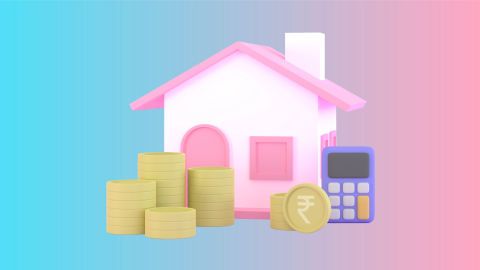Navigating through the complex landscape of tax deductions from salary in India can often feel challenging. Understanding the various components, exemptions, and rules governing salary taxation is crucial for every taxpayer. In this comprehensive guide, we will delve into the intricacies of tax deductions from salary in India, providing you with a roadmap to effectively manage your finances and optimize your tax liabilities.
Understanding salary taxation in India
Taxation on salary income in India follows a progressive tax system, where individuals are taxed at different rates based on their income slabs. These tax rates are subject to periodic revisions by the government. It's essential to comprehend the basic structure of salary taxation to gauge how much tax you're liable to pay.
How to calculate income tax for salaried individuals?
Calculating income tax for salaried individuals involves a few steps. Here's a guide on how to determine how much tax is deducted from salary in India.
- Gather income details: Collect all sources of income for the financial year, including salary, allowances, bonuses, and any other earnings.
- Deduct exemptions and deductions: Subtract eligible exemptions and deductions under various sections of the Income Tax Act, such as Section 80C for investments, Section 24 for home loan interest, and HRA exemption.
- Calculate gross total income: Sum up the income from all sources after deducting exemptions and deductions to arrive at the gross total income.
- Apply tax slabs: Determine the applicable tax slabs based on the individual's income level for the financial year. The tax slabs vary depending on the total income earned.
- Calculate taxable income: Subtract any applicable deductions, such as standard deduction or professional tax, from the gross total income to arrive at the taxable income.
- Calculate tax liability: Apply the tax rates corresponding to the tax slabs on the taxable income to calculate the total tax liability.
- Deduct taxes paid: Subtract any taxes already paid through TDS (Tax Deducted at Source) or advance tax payments from the total tax liability.
- File Income Tax Returns (ITR): Ensure compliance with filing ITR within the stipulated deadlines to avoid penalties or interest charges.
By following these steps, salaried individuals can accurately calculate their income tax liabilities and fulfil their tax obligations. Utilizing online tax calculators or seeking assistance from tax professionals can aid in accurate calculations and effective tax planning strategies.
Income tax slab for salaried person
Income tax slabs in India determine the rate at which income is taxed. These slabs are based on the annual income of an individual and are subject to changes in each budget. Understanding the slabs is crucial to know how much tax is deducted from salary in India.
For the financial year 2023-2024 (Assessment Year 2024-2025), the income tax slabs for salaried individuals in India are as follows:
Net Annual Taxable Income |
New tax regime (excluding the exemptions and deductions) |
Old tax regime (including the exemptions and deductions) |
Up to Rs. 2,50,000 |
Exempt |
Exempt |
Rs. 2,50,001 to Rs. 3,00,000 |
Exempt |
5% |
Rs. 3,00,001 to Rs. 5,00,000 |
5% |
5% |
Rs. 5,00,001 to Rs. 6,00,000 |
5% |
20% |
Rs. 6,00,001 to Rs. 9,00,000 |
10% |
20% |
Rs. 9,00,001 to Rs. 10,00,000 |
15% |
20% |
Rs. 10,00,001 to Rs. 12,00,000 |
15% |
30% |
Rs. 12,00,001 to Rs. 15,00,000 |
20% |
30% |
Above Rs. 15,00,000 |
30% |
30% |
Deduction under income tax for salaried employees
Various deductions can significantly reduce taxable income. Here's a breakdown of common deductions:
1.House Rent Allowance (HRA)
HRA is partially exempt from tax if the employee is living in rented accommodation. The exempt amount is the least of the following:
- Actual House Rent Allowance (HRA) received
- 50% of salary (for metro cities) or 40% (for non-metro cities)
- Rent paid minus 10% of salary
2. Leave Travel Allowance (LTA)
LTA is tax-exempt for travel expenses incurred by the employee for travel within India. It can be claimed twice in a block of four years.
3. Standard deductions
A standard deduction of Rs. 50,000 is allowed for salaried employees, reducing their taxable income.
4. 80CCD(1), 80CCC, Section 80C
These sections cover deductions for contributions to the National Pension Scheme (NPS), life insurance premiums, provident fund contributions, tuition fees, and more. The combined limit under Section 80C is Rs. 1.5 lakh.
5. Deductions against loan interests
Interest on home loans qualifies for deductions under Section 24(b). The limit is Rs. 2 lakh for self-occupied property.
Exemptions/ tax savings options for salaried people
Salaried individuals can further reduce their tax liability through various exemptions and tax-saving options such as:
- Investments in ELSS: Equity Linked Savings Scheme provides tax benefits under Section 80C.
- Public Provident Fund (PPF): Contributions to PPF are eligible for tax deductions.
- National Savings Certificate (NSC): Investments in NSC qualify for tax benefits under Section 80C.
Consider Bajaj Housing Finance Home Loan
Open the gateway to your ideal home and capitalize on substantial tax benefits with Bajaj Housing Finance Home Loan. Whether you are embarking on your maiden home purchase or seeking investment opportunities, Bajaj Housing Finance presents a convenient home loan options designed specifically for you. By harnessing the advantages of home loan tax deductions outlined in Sections 24(b) and 80C of the Income Tax Act, you can curtail your taxable income and amplify your savings. Here's why opting for Bajaj Housing Finance for your home loan is a prudent choice:
- Flexible repayment options: Take advantage of repayment periods extending up to 32 years, enabling you to select a plan that best suits your financial circumstances and makes repayment more manageable.
- Competitive interest rates: Begin your homeownership journey with attractive interest rates starting as low as 7.45%* p.a, and enjoy affordable EMIs starting at Rs. 684/lakh*, making homeownership more accessible.
- Customisable loan options: Tailor your home loan to fit your specific requirements with flexible loan amounts, and repayment terms, giving you greater control over the home-buying process.
- Top-up loan facility: Enhance your financial flexibility with a top-up loan facility, offering additional funds of Rs. 1 crore* or higher at competitive interest rates and minimal documentation, making it easier to manage a home loan balance transfer.
- EMI calculator: You can utilise our home loan EMI calculator, this can help you plan your finances by calculating monthly instalments based on loan amount and tenure.
Choose Bajaj Housing Finance Home Loan to turn your homeownership dreams into reality, enjoy financial flexibility, and maximise your tax savings.




